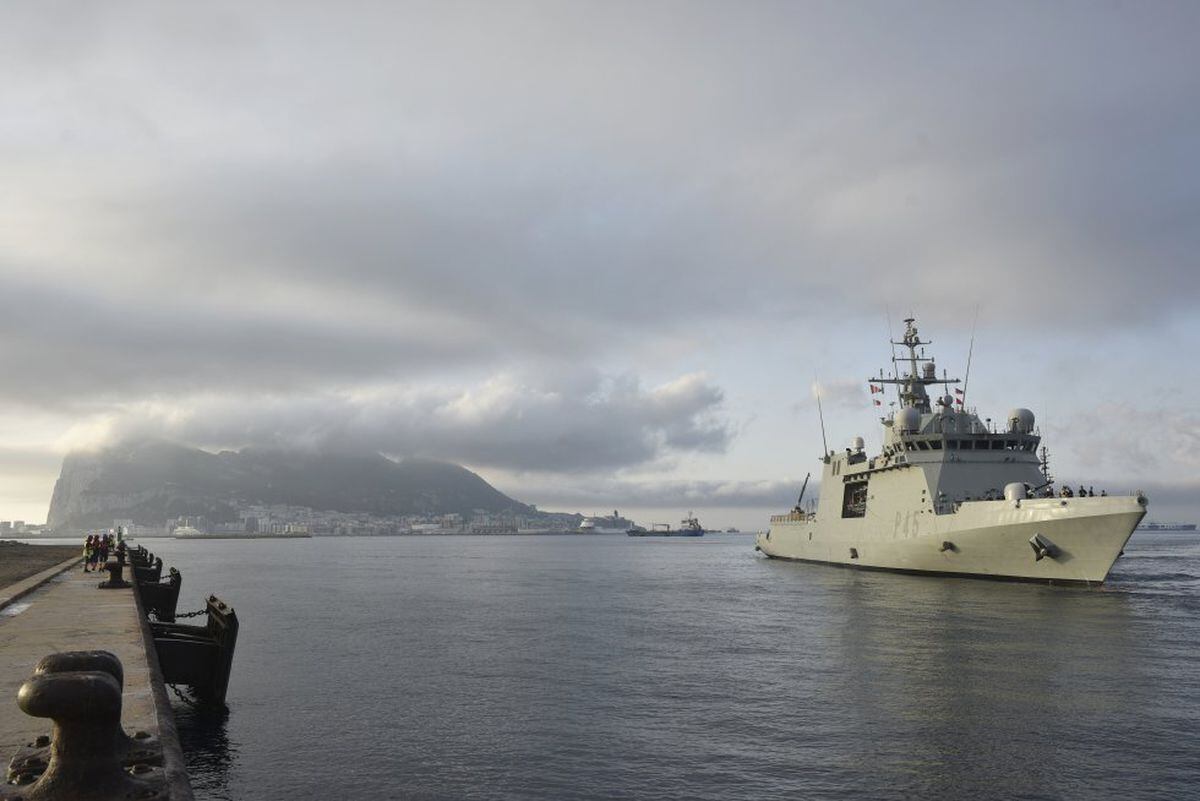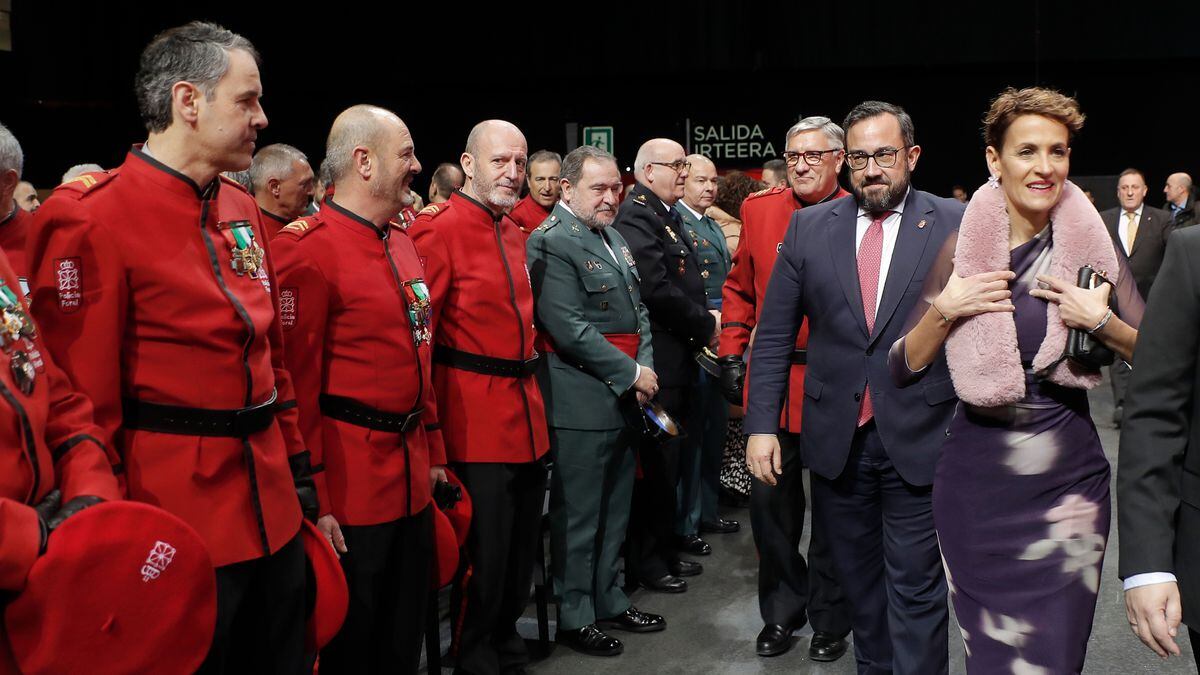Brussels, June 24.
A few hours ago, hundreds of migrants and refugees forced their way into a border post that connects Nador and Melilla.
Only 133 have managed to overcome the police cordon, but it has already transpired that there are dead and injured.
At that time, videos recorded by the Moroccan security forces themselves circulate like wildfire in which a pitched battle is intuited or how these agents brutally beat people on the ground.
Also those images in which dozens of bodies are seen —one on top of the other, it is not known if they are alive or dead— surrounded by Moroccan gendarmes.
Asked about the event, President Pedro Sánchez responded to the journalists: "If you see the images,
You will also see that the Moroccan gendarmerie has made a full effort precisely to try to prevent this violent leap over the fence of the autonomous city of Melilla.
Therefore, I think it is important to recognize the extraordinary work that the Moroccan government is doing in coordination with the Spanish security forces […] And, in this case, well resolved”.
Sánchez later said that he had not seen the images and showed his solidarity with the families of the dead, but those first statements —although they were qualified later— would mark the discourse that the socialist wing of the Government has maintained until today.
The ideas with which the official story has been built are more or less the same from day one: the fault lay with the mafias, it was a "violent attack" and "intolerable" by the refugees, and the actions of the Civil Guard was "legal, temperate and proportionate".
A balance between the unwavering defense of the Spanish action and the silence about the questioned Moroccan action.
On the other hand, the PSOE had never defended so much the returns on fire, which it previously condemned.
Nor resorted to terms such as "attack", "assault",
More information
Documentary |
Tragedy on the Melilla border: the role of Morocco and Spain in the deaths of 24-J
Unidas Podemos, as has happened on other occasions on the immigration issue, had an uncomfortable position.
On June 27, at the press conference after the Council of Ministers, the Minister for Equality, Irene Montero, remained silent on the subject: several of the questions that were addressed to her were answered by the Government spokesperson, Isabel Rodríguez.
The next day, Montero already said: "The events that we have seen are unbearable and tremendously painful."
She called for "an independent investigation" and to make the Spanish consular services available to the families of the deceased.
"We must know what has happened, for the families of the deceased and as a society," said the second vice president, Yolanda Díaz, that same day.
A good part of the political dust that this matter has generated has to do with the fact that the information has been given in drops.
Verónica Fumanal, political communication adviser, analyzes the official discourse: “They wanted to settle an issue that generates a lot of conflict with Morocco and since then there has been a flight forward with a discourse that is unsustainable for a progressive government.
They trusted that time would pass and this would stop being news.
Facts have also been denied that have later turned out to be true.
On June 29, in Congress, Grande-Marlaska denied that the Moroccan agents were entering Spanish territory to help the Civil Guard return the migrants and refugees.
This is how he responded to the EH-Bildu deputy, Jon Iñarritu: “He assumes that Moroccan gendarmes entered Spanish territory as proven facts.
I suggest that you do not repeat falsehoods of this type, unless there is proof."
The images that prove the incursion of Moroccan gendarmes could be seen in the
Público newspaper
a day after the tragedy, but the minister, according to what was said in his environment, had not seen them.
On September 21, in his first appearance in Congress on the matter, Grande-Marlaska no longer denied the evidence, but denied that the Moroccans were acting on Spanish soil.
The pictures show that they did.
On July 3, in an interview with EL PAÍS, President Sánchez, when asked if, after seeing the images that had circulated, he believed that human rights were being respected, replied: "It seems to me that this answer must be given by the Government of Morocco”.
It is the furthest that has been reached regarding the performance of the neighboring country.
Five days later, Fernando Grande-Marlaska publicly praised his partner on a visit to Rabat: Morocco's work to contain irregular immigration was "important" and should be "recognised."
Paradoxically, the most critical words were pronounced by the European Commissioner for the Interior.
Ylva Johanson insisted on “violent means”, but she also said: “It is unacceptable that people die in this way at our EU border”.
By then there was already a lot of information that raised more questions than answers.
The Moroccan Association for Human Rights (AMDH) had denounced that Morocco was opening graves in the Nador cemetery to hastily bury the corpses [something that Rabat has denied].
Several NGOs requested investigations on both sides of the border and the survivors, who had begun to recount the attacks they had suffered by Moroccan agents, even denounced that it was the beatings that caused the death of some of them.
The matter cooled down during the summer, but after the holidays it was revived with the appearance of Grande-Marlaska on September 21 in Congress.
There, the minister assured that the events had occurred in a third country and only "tangentially" in Spain.
But, where does Spain start at that border post?
"The limits between countries have been crystal clear for many years," the minister said Wednesday in Congress.
Until today, although the deputies have asked him several times where those limits are, Grande-Marlaska has not responded.
Since his ministry, any possible responsibility (by action or omission) of the Spanish authorities has been rejected and confusion has been generated about the definition of the territory.
Although the entire enclosure is built in Spain, as indicated by the cadastre and the international agreements that delimit the border, the department of Grande-Marlaska flatly rejects to this day that Spain exercises sovereignty over the entire place.
His collaborators have coined concepts such as "transit zone", "joint operational zone" or "no man's land" that have been moving places.
The "no man's land", at that time, was located in the courtyard under Moroccan control where hundreds of people initially gathered while they forced the doors that give access to Spain.
Until the BBC came along.
More information
Agony on both sides of the Melilla border
On November 1, the British network released a documentary about the tragedy.
Of the eight revelations that the report presented, seven had already been reported by the Spanish media, but it delved into a matter yet to be exploited: beyond what the cadastre said, the avalanche, which left dead and seriously injured, also occurred in an area that is under Spanish control.
It also located the Moroccans entering that area and dragging the victims of the avalanche towards their side.
The BBC presented the same images that had been circulating for months, but located them for the first time in the compound with a civil guard explaining to the camera that those doors through which the people rushed were Spain.
Interior criticized the documentary for accusing "such serious events" without evidence, and insisted that there were no deaths on the Spanish side.
From that day on, according to the information provided by the ministry to the media, the "joint operational zone" or "no man's land" grew a few meters and also began to occupy the space behind the doors where the victims of the avalanche fell.
Weeks later, it is no longer denied that the avalanche left people on the Spanish side, but it is maintained that there were no deaths.
That there are deaths is important because of the legal consequences that the case may have in Spain and because it refutes the words of the minister, but while the focus is on it, it is ignored that there are no doubts that there were injured who were trapped on the Spanish side and that the Spanish authorities did not intervene.
The BBC revived political and media pressure on the minister.
After almost five months asking for it, on November 7 a group of deputies from the Interior Commission traveled to Melilla and was able to see part of the aerial images recorded by the Civil Guard.
The deputies left there saying that the avalanche had left victims (and even deaths) in Spain.
"Everything seems to indicate that there were deaths in the control area of the Spanish authorities and if this has happened, it is the Spanish authorities that are competent to carry out the investigations," said Enrique Santiago, deputy of Unidas Podemos.
On November 18, Unidas Podemos, together with EH-Bildu and ERC, among others, called for an investigation commission that overthrew the PSOE and the PP.
The media, including EL PAÍS, also had access to some fragments of the videos.
Viewing the images revealed unknown details such as the fact that the helicopter had recorded the avalanche and the people asking for help, but it immediately stopped recording the place.
Or that there were people apparently fainted in Melilla who did not receive medical assistance.
On November 25, the deputies had access behind closed doors to all the recordings.
The groups again questioned the explanations given by Grande-Marlaska, although that day, Enrique Santiago had already lowered his tone.
The controversy generated by the reduction of sentences brought by the
law of only yes is yes
she had put Irene Montero on the trigger and the PSOE supported her in the face of attacks from the right: it was not the time to create more divisions.
Santiago is no longer in favor of a commission of inquiry.
On November 29, EL PAÍS published an investigation together with Lighthouse Reports and three international media about the tragedy.
The documentary provides new evidence: a witness and the Moroccan guards who were recorded dragging bodies from the Spanish to the Moroccan side suggest that there was at least one death in the area controlled by Spain.
The next day, the minister appeared again.
“Any conjecture like the ones being made […] that the State Security Forces and Corps, especially the Civil Guard, would have allowed this type of tragic event to happen in our country without doing anything, is grossly irresponsible.” .
In his three interventions, during the four hours that the appearance lasted approximately, the minister mentioned the word "violent" to refer to the "attack" 22 times.
Subscribe to continue reading
Read without limits
Keep reading
I'm already a subscriber



/cloudfront-eu-central-1.images.arcpublishing.com/prisa/WSGIPYQJ3ZBJBLTWACM5ZX2QGA.jpg)
/cloudfront-eu-central-1.images.arcpublishing.com/prisa/J6S7GVYUFHX6VJHHBV5YY3DKFM.jpg)










